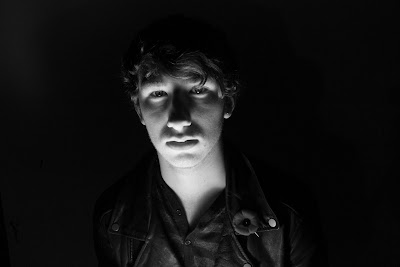
Annie Leibovitz was born on October 2, 1949 in Waterbury, Connecticut. With the intent of studying painting, she enrolled in the San Francisco Art Institute while taking night classes in photography. It wasn’t until she travelled to Japan with her mother in the summer after her second year that diminished her ambitions to be a painter, but confirmed her raging passion for taking photographs. That fall, Annie returned to the Institute, but this time to pursue her career as a photographer, which was evidently the right choice for she is one of the most aesthetically gifted photographers the world has ever seen.
In 1970, Annie approached Jann Wenner, a founding editor of Rolling Stone Magazine. Thoroughly impressed with Annie's portfolio, Jann hired her on the spot and assigned her to her first task to really prove herself: shoot John Lennon. Annie used this opportunity to its full potential, with the pearly, mysterious, black-and-white portrait landing the front cover of the January 21, 1971 issue. Two years later after her infamous photo shoot with Lennon, she became the chief photographer for Rolling Stone Magazine. She learned a lot from this, and had to adapt her techniques and skills to match with the direction the magazine was going. For example, in 1974, the magazine started to print in colour, and since Leibovitz learned only black-and white-photography in school, she had to learn how to shoot in colour.
In 1983, Leibovitz left Rolling Stone to begin working for the entertainment magazine, Vanity Fair, where she shot subjects that ranged from working citizens to presidents to music icons. With Vanity Fair, a small selection of people she shot included Demi Moore, George Clooney, Angelina Jolie, Ellen DeGeneres, and John Lennon. She even received the honour of shooting England's Queen Elizabeth. She had an infectious persona about her, and others who have shot with her describe her as quirky, humorous, picky about her work, and infatuated with photography.
In 1983, Leibovitz left Rolling Stone to begin working for the entertainment magazine, Vanity Fair, where she shot subjects that ranged from working citizens to presidents to music icons. With Vanity Fair, a small selection of people she shot included Demi Moore, George Clooney, Angelina Jolie, Ellen DeGeneres, and John Lennon. She even received the honour of shooting England's Queen Elizabeth. She had an infectious persona about her, and others who have shot with her describe her as quirky, humorous, picky about her work, and infatuated with photography.
After watching a documentary about her in class, I was immediately fascinated by her. Her confidence, self-assurance, and the way she knew exactly how to get the result she wanted instantly intrigued me. It was as if her and the camera became one whenever she was on set. Annie is an inspiration to photographers worldwide; I being one of them. She puts her heart and soul into each photograph she takes. Leibovitz' photographs, with their legendary contrast, definition, and compositional particularity, are a clear indication of her unmistakable talent. She is an exceptional inspiration to women on a major level, not just because of the success she has earned herself through her gift and hard work, but also because of her undeniable self-confidence and power she radiates, which all women should possess in their lives, especially in the working world.
- - - - - - - - - - - - - - - - - - - - - - - - - - - - - - - - - - - - - - - - - - - - - - - - - - -
For my photographs, I attempted to emulate Leibovitz' signature aspects of simplicity, compositional rule of thirds, the use of lines to frame and shape the photos, great contrast, intense definition, and a variety of warm and cool tones. My objective was to focus on the facial and body expression of my subject, highlighting the blank and "empty" feeling she portrays. I know it would be extremely difficult to shoot photos on par with Annie's, but I hope I was at least mildly (and humbly) successful at capturing an essence of her in my photos!
"A thing that you see in my pictures is that I was not afraid to fall in love with these people."
-Annie Leibovitz
Annie Leibovitz, My Brother Philip and My Father, Silver Spring, Maryland, 1988.
Annie Leibovitz, John Lennon and Yoko Ono, the Dakota, N.Y. December 8, 1980.
Annie Leibovitz, Meryl Streep for Rolling Stone cover, October 15, 1981.
For my photographs, I attempted to emulate Leibovitz' signature aspects of simplicity, compositional rule of thirds, the use of lines to frame and shape the photos, great contrast, intense definition, and a variety of warm and cool tones. My objective was to focus on the facial and body expression of my subject, highlighting the blank and "empty" feeling she portrays. I know it would be extremely difficult to shoot photos on par with Annie's, but I hope I was at least mildly (and humbly) successful at capturing an essence of her in my photos!
Bibliography
"Annie Leibovitz | Vanity Fair." Vanity Fair. N.p., n.d. Web. 22 Jan. 2012. <http://www.vanityfair.com/contributors/annie-leibovitz>.
Somerstein, Rachel . "Annie Leibovitz - Life Through A Lens | American Masters | PBS." PBS: Public Broadcasting Service. N.p., n.d. Web. 23 Jan. 2012. <http://www.pbs.org/wnet/americanmasters/episodes/annie-leibovitz/life-through-a-lens/16/>.



















